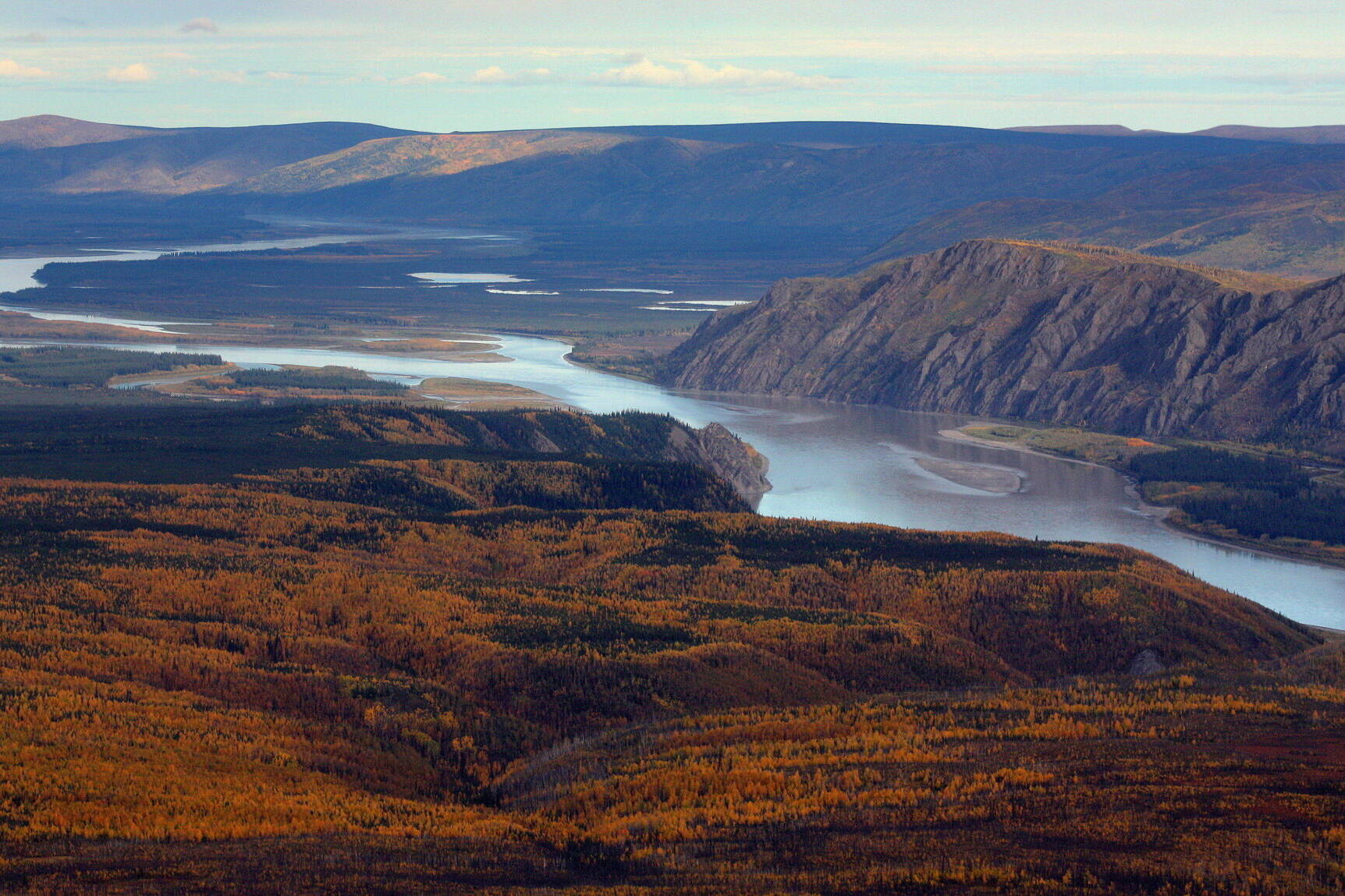A cyanide spill at a major gold mine in the Yukon Territory — high in the Yukon River watershed — has sparked widespread concern in Canada.
But Alaska salmon advocates say the mishap isn’t just a problem for Yukoners: The spill happened upstream of a tributary of the Yukon River. The Yukon is Alaska’s biggest transboundary waterway, and residents along its shores who have depended on salmon for generations are already suffering amid crashes of multiple species.
Officials on both sides of the border say it’s too early to know the full impact of the spill, which happened in late June. And they’ve advised that there likely isn’t a health risk to residents along the Yukon.
Still, some advocates fear that the pollution — which has not been fully contained — could make matters worse for the Yukon River’s struggling fish.
“Now we have a new threat to our salmon,” said Brooke Woods, a tribal member and salmon advocate in Rampart, an interior Alaska village on the upper Yukon River.
The spill has also prompted renewed objections from Alaskans who say that Canadian mining projects threaten the state’s fisheries downstream.
For decades, Alaskans have voiced fears that such mines risk polluting rivers that flow into Alaska and sustain commercial and subsistence fisheries.
That advocacy has largely targeted mines near a handful of rivers in British Columbia and Southeast Alaska.
But the new spill — which marks the first large-scale Canadian mining incident in a transboundary watershed in recent history — was much farther north, near the central Yukon Territory village of Mayo and 100 miles east of Dawson City.
The incident occurred June 24 at Victoria Gold’s Eagle mine, the Yukon’s largest and newest gold mine. A landslide at the site’s heap leach pad, where the company uses cyanide to extract gold from ore, ripped through a containment barrier.
The failure released some 2,000,000 metric tons of material, including hundreds of thousands of cubic meters of cyanide solution, into the environment. About 10 days later, high levels of cyanide, which is toxic to fish, were detected in a creek downstream, though more recent samples showed safer levels, according to the Yukon government.
Yukon officials and leaders of the First Nation of Na-cho Nyäk Dun, whose traditional territory surrounds the mine, say they’ve been working with publicly-traded Victoria Gold to contain pollution, clean up the site and monitor water quality.
Victoria Gold and Na-cho Nyäk Dun representatives did not respond to requests for comment.
In response to the spill, the Na-cho Nyäk Dun government called for a pause on all mining activity in the First Nation’s traditional territory, along with an independent investigation and review.
The Yukon government has told Canadian media that it’s committed to investigating what went wrong.
Alaska officials, meanwhile, have said little publicly about the incident.
“We are monitoring,” Alaska Department of Fish and Game Commissioner Doug Vincent-Lang said in an email.
The site is “highly unstable” with few options for containment, and heavy rains could “easily overwhelm containment efforts,” Vincent-Lang said. The landslide, he added, apparently was not caused by rainfall or an earthquake, suggesting that “poor design and negligence” were to blame.
The area was deemed low-risk for fish habitat when the mine was permitted, Vincent-Lang said. Nearby Haggart Creek flows into the McQuesten River, where Chinook salmon migrate to spawn; the McQuesten flows into the Stewart River, which flows into the Yukon.
The spill may give new ammunition to Alaska policymakers who have been pressing for tighter oversight of Canadian mines. Republican U.S. Sen. Lisa Murkowski, who’s been calling attention to the issue for years, is tracking the spill, a spokesman said. But he added that public information “remains extremely limited.”
“The senator is concerned this is yet another instance of a subpar regulatory system on the Canadian side of the border, which has clear implications for the transboundary mining occurring just upstream of Southeast Alaska,” Joe Plesha, the spokesman, said in an emailed statement.
Spokespersons for Republican U.S. Sen. Dan Sullivan and Democratic U.S. Rep. Mary Peltola did not respond to requests for comment.
Heather Hardcastle, who works for a mining watchdog group called Salmon Beyond Borders, said the Victoria Gold spill “feels disturbingly similar” to the 2014 disaster at British Columbia’s Mount Polley Mine. Her organization has been calling attention to Canadian mining projects in the watersheds of other Southeast Alaska rivers that support major commercial and subsistence salmon fisheries.
“Our great fear is that the next disaster will be in the headwaters of the transboundary Taku, Stikine or the Unuk Rivers, which would directly impact Alaskan communities,” Hardcastle said in an emailed statement.
Along the Yukon, news of the Eagle mine spill has been spreading in recent weeks, prompting concerns and questions from residents.
On a weekly conference call hosted by the Yukon River Drainage Fisheries Association on Tuesday, Basil Larson, a fisherman in the lower Yukon village of Russian Mission, said some people are worried that it’s not safe to swim.
But Elizabeth MacDonald, fisheries manager at a consortium of Yukon tribal governments, said cyanide from the spill is unlikely to trickle into the Yukon River at dangerous levels.
“At the end of the day, the water down by you should be safe to drink because it’s being diluted so much,” MacDonald, who works for the Council of Yukon First Nations, told Alaskans on the call. “Humans are way less sensitive to cyanide than fish. You would see fish dying long before it would have an effect.”
• This article was originally published in Northern Journal, a newsletter from Nathaniel Herz. Subscribe at this link. Reach freelance contributor Max Graham at maxmugraham@gmail.com. This article originally appeared online at alaskabeacon.com. Alaska Beacon, an affiliate of States Newsroom, is an independent, nonpartisan news organization focused on connecting Alaskans to their state government.

